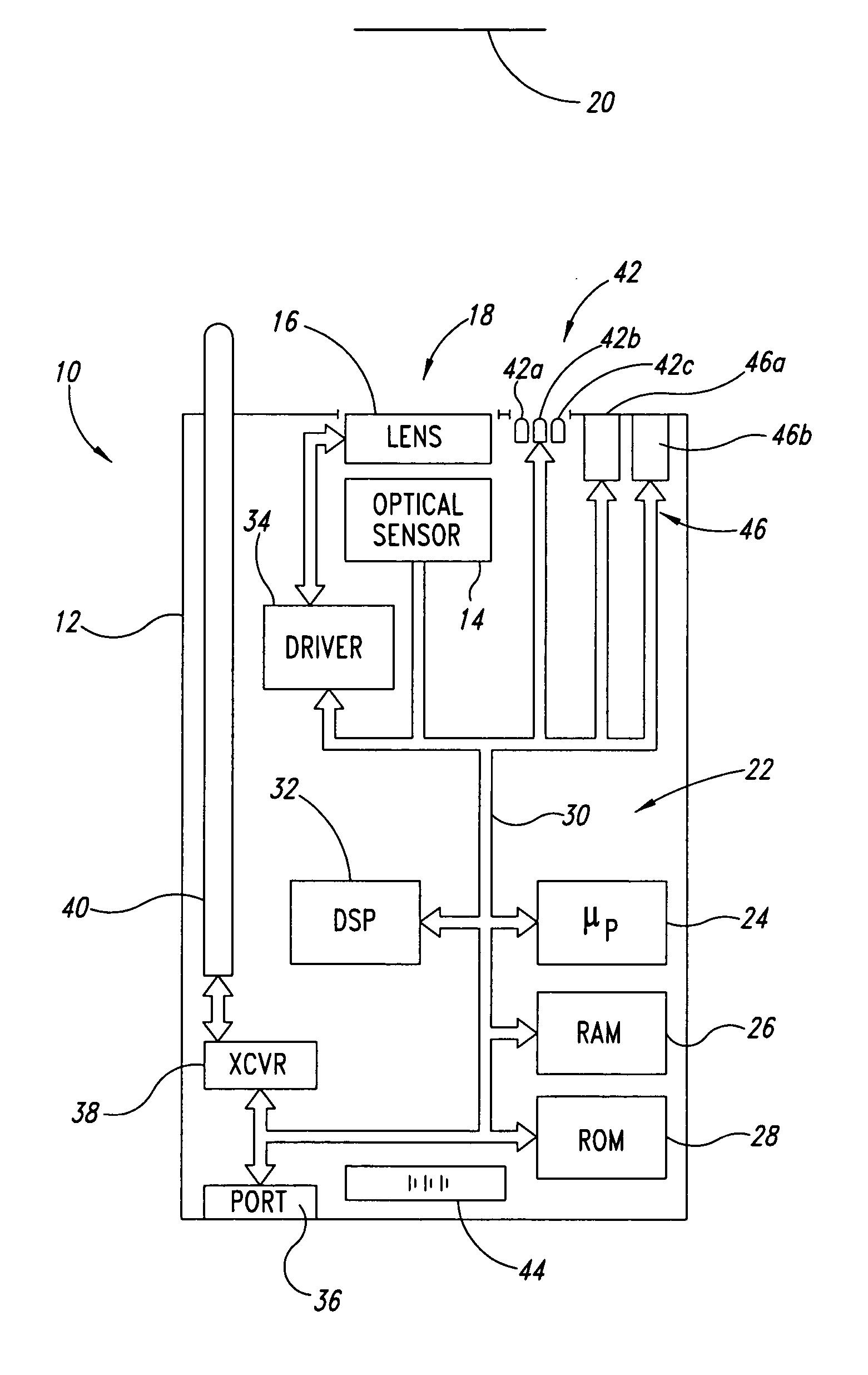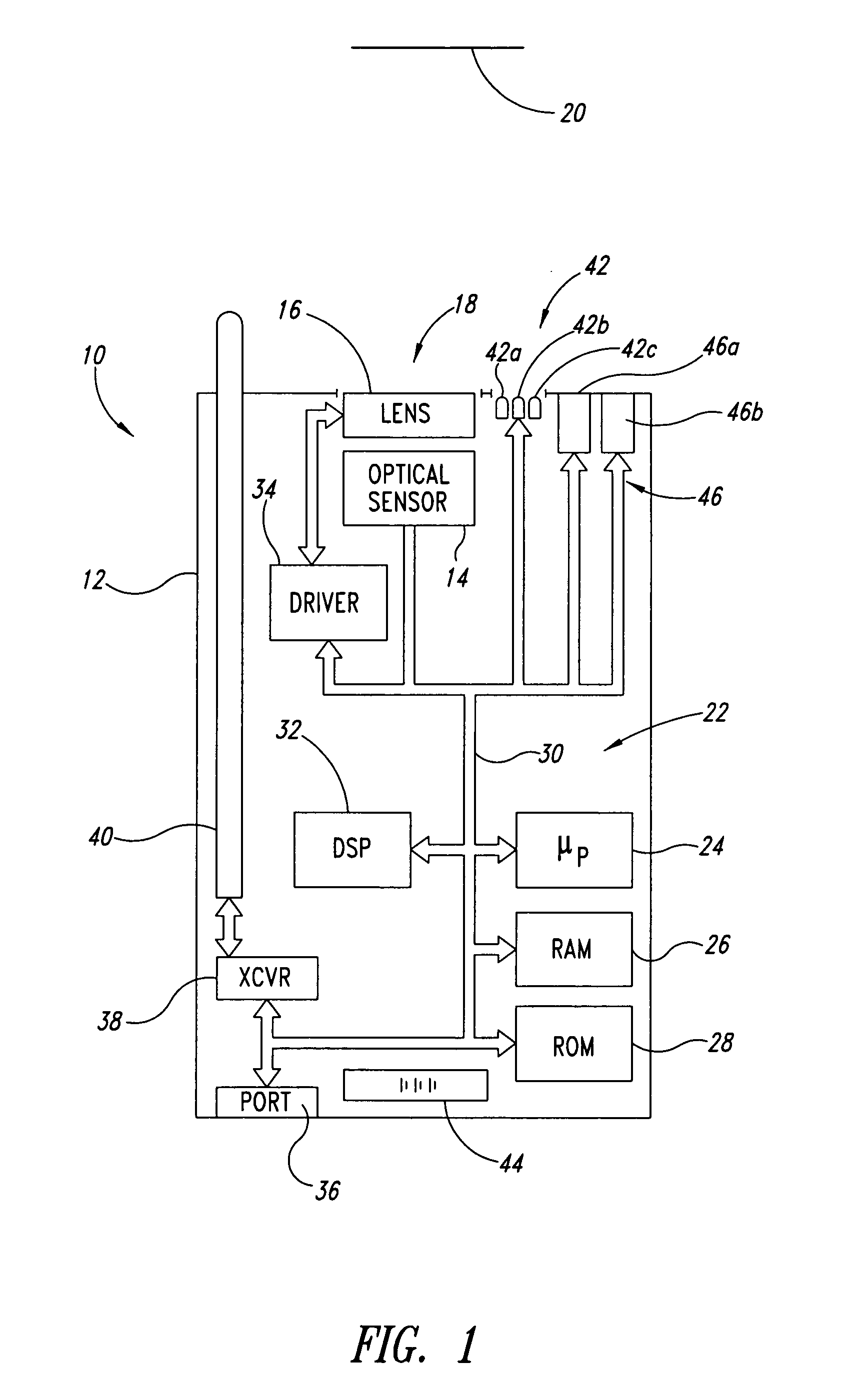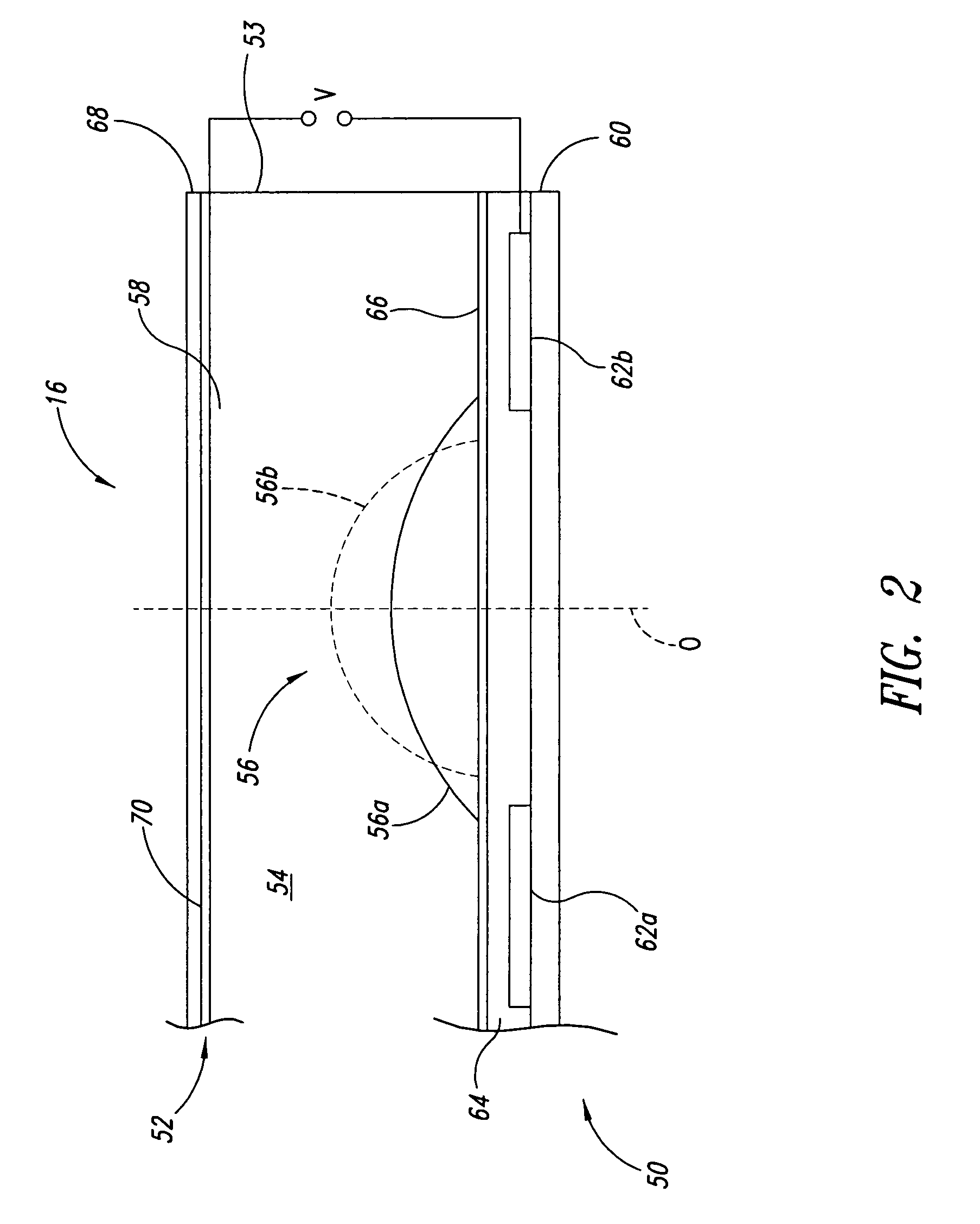Autofocus barcode scanner and the like employing micro-fluidic lens
a microfluidic lens and barcode scanner technology, applied in the field of optoelectronic reading devices, can solve the problems of incompatibility with many other imaging applications, limited increase, and blurring of pupil diffraction, so as to reduce or eliminate the need for illumination, reduce the f-number, and wide spatial resolution range
- Summary
- Abstract
- Description
- Claims
- Application Information
AI Technical Summary
Benefits of technology
Problems solved by technology
Method used
Image
Examples
Embodiment Construction
[0033] In the following description, certain specific details are set forth in order to provide a thorough understanding of various embodiments of the invention. However, one skilled in the art will understand that the invention may be practiced without these details. In other instances, well-known structures associated with optoelectronic reading devices including light sources, lens, optical sensors, processors, memories, and communications devices have not been shown or described in detail to avoid unnecessarily obscuring descriptions of the embodiments of the invention.
[0034] Unless the context requires otherwise, throughout the specification and claims which follow, the word “comprise” and variations thereof, such as, “comprises” and “comprising” are to be construed in an open, inclusive sense, that is as “including but not limited to.” The headings provided herein are for convenience only and do not interpret the scope or meaning of the claimed invention.
[0035] Reference thr...
PUM
 Login to View More
Login to View More Abstract
Description
Claims
Application Information
 Login to View More
Login to View More - R&D
- Intellectual Property
- Life Sciences
- Materials
- Tech Scout
- Unparalleled Data Quality
- Higher Quality Content
- 60% Fewer Hallucinations
Browse by: Latest US Patents, China's latest patents, Technical Efficacy Thesaurus, Application Domain, Technology Topic, Popular Technical Reports.
© 2025 PatSnap. All rights reserved.Legal|Privacy policy|Modern Slavery Act Transparency Statement|Sitemap|About US| Contact US: help@patsnap.com



